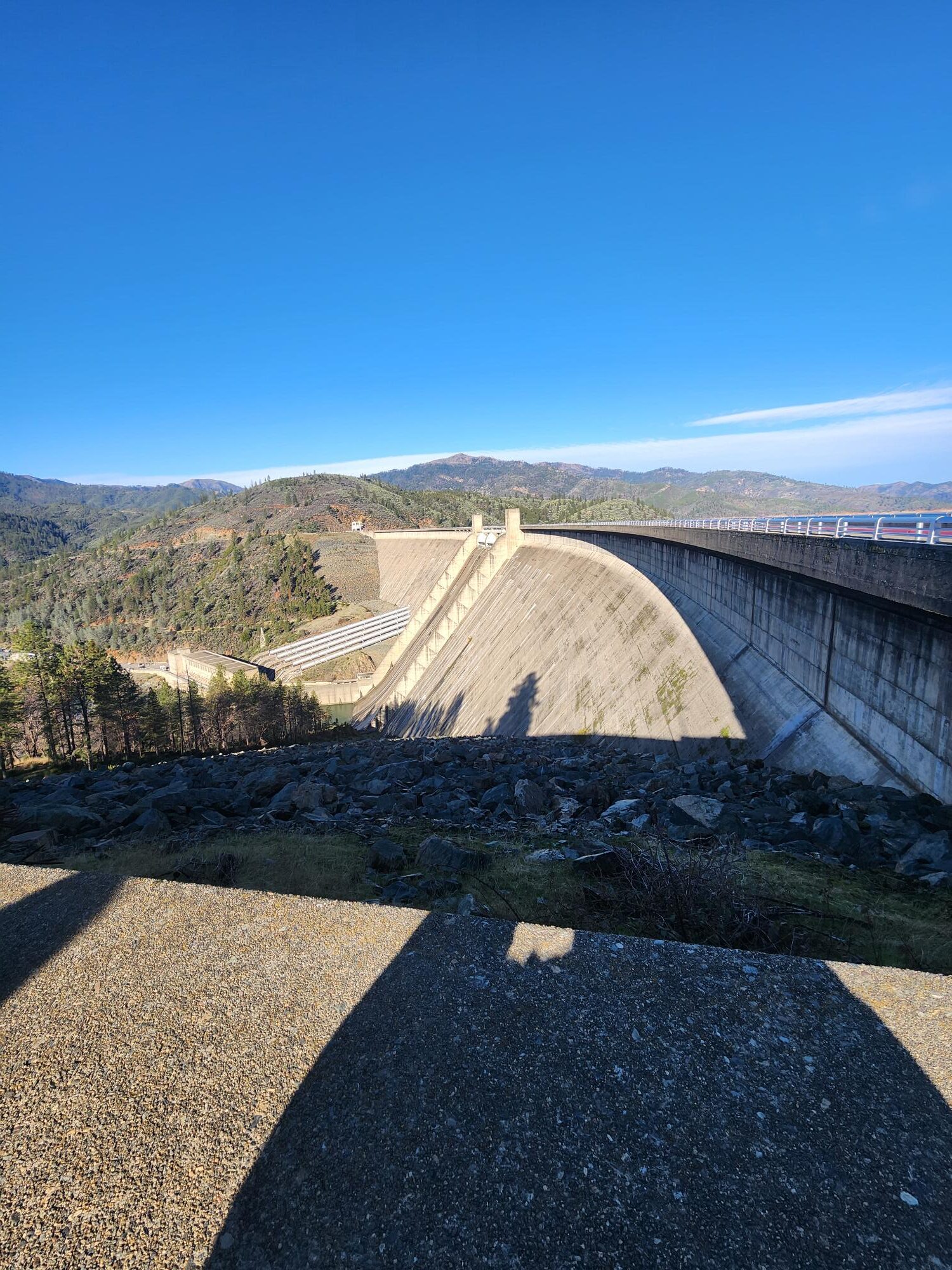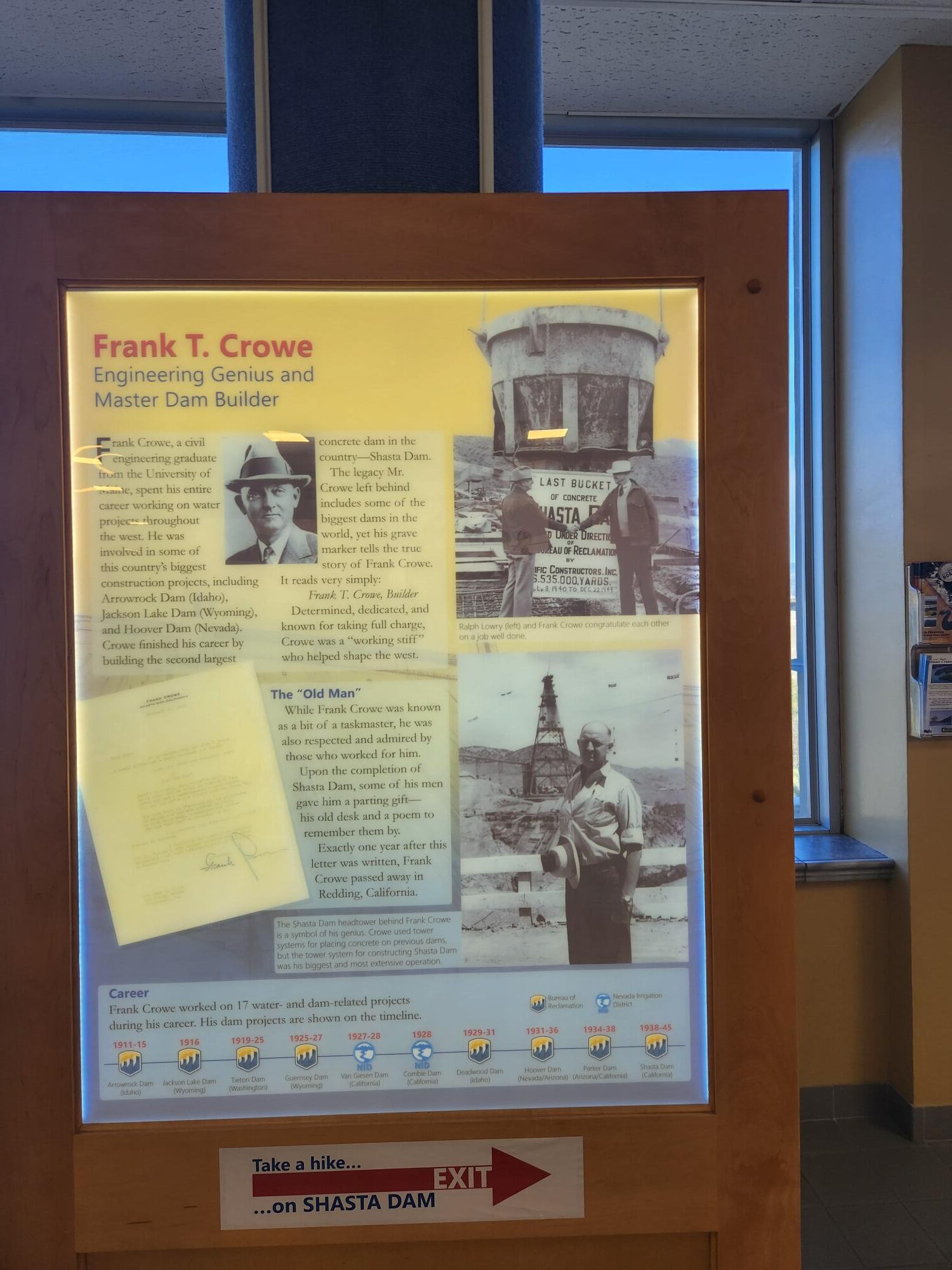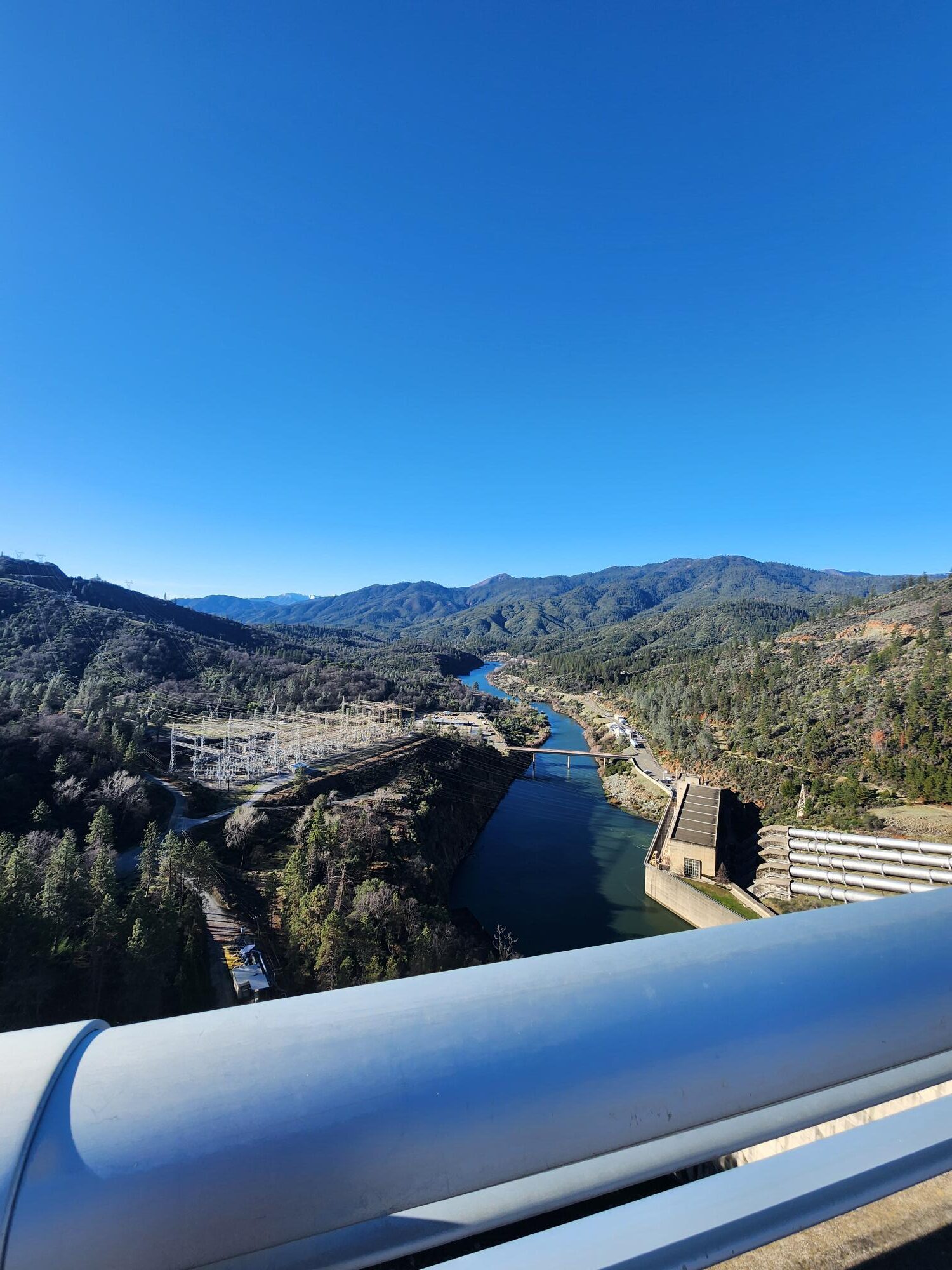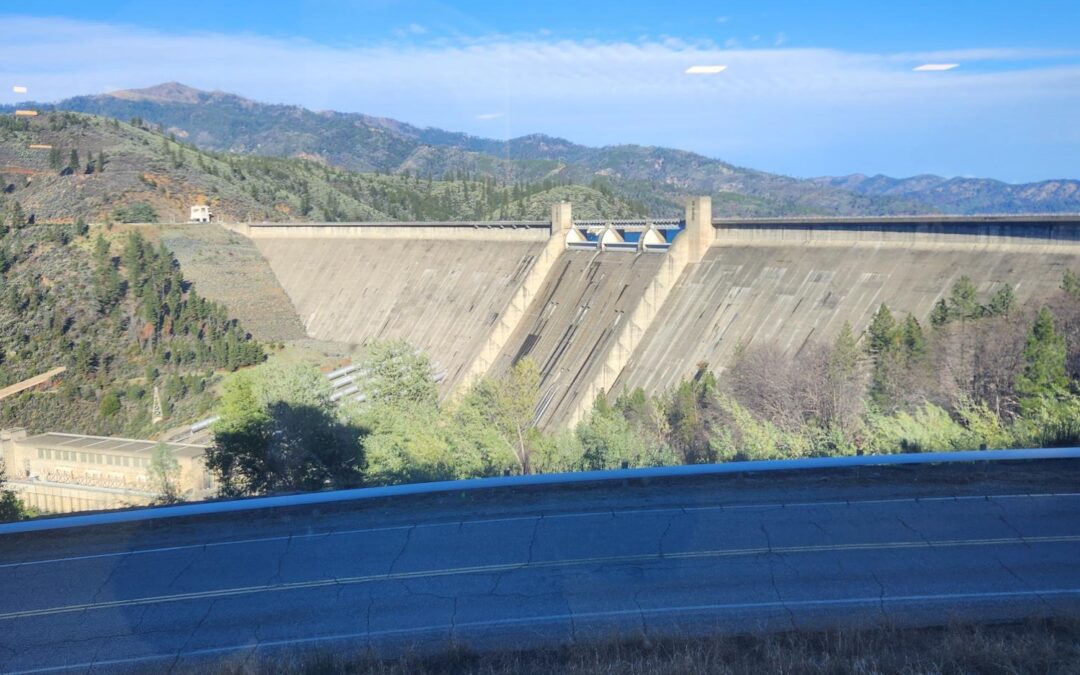Dams are incredible pieces of engineering. They are a key part of how society functions and are integral to power generation and water supplies. Their appearances become iconic fixtures of the landscape and are beautiful examples of engineering in action.
In this blog we discuss the Mount Shasta dam, a key part of California infrastructure. It is one of the biggest dams in the United States and serves a multitude of functions from flood control, power generation and water storage.

Shasta dam is a concrete arch gravity dam located on the Sacramento River in northern California. The city of Redding California is close by the dam and the town of Mount Shasta is on the northern end. It is the 8th largest dam in the United States and is 602ft (183m) high. At the time of completion, it was the second tallest dam in the world and was considered one of the world’s greatest engineering accomplishments.
The dam was built by legendary construction manager Frank Crowe. He worked on many of the United States biggest projects and was highly respected by his peers. He was a civil engineer and construction manager who oversaw and planned the construction of the Shasta dam and many others. He was the main person in charge of managing the dam’s construction. He had a team of managers, foreman and workers that followed him on many projects throughout the country.
The project was started in 1937 and was completed in 1945, 26 months ahead of schedule. It was a monumental project that required thousands of workers and careful coordination of project assets and resources. The bureau of Reclamation oversaw the project as public works operation. It was very important during WWII and provided a steady source of electricity for the war effort.
Construction of the Shasta dam created Shasta Lake. It is the biggest reservoir in the state and contains 4,552,000-acre feet of water at full capacity. The dam was initially envisioned as a source of water storage for the blossoming agricultural industry. The water concerns in California have been a long-standing issue and the Shasta dam was envisioned as a way of combating this issue. It is a pivotal piece of infrastructure for the region and the state by serving multiple functions simultaneously.
The dam was built for many different reasons, it provides a source of power by generating electricity using turbines within the dam. These turbines spin at specific RPMs to generate electricity. The movement of the turbine is what causes electricity to be produced by the generator. The volume of electricity produced is determined by the number of generators and their individual outputs.
Flood control is another key aspect of the Mount Shasta dam. Up in the northern California mountain ranges such as the Klamath and Sierra Nevada mountains have a lot of snow on their peaks. This snow is a huge source of water but will cause issues during the spring melt period. Freshet is the overflow of water that causes the water levels to rise due to the increased run off from up in the mountains. Many rivers and creeks swell with the increase water volume, which is problematic for towns and residences along the river.

Damage from floods is a real concern here and the Mount Shasta dam provides a method of flood control. Downstream of the dam, the Sacramento River can be metered by using the spillway on the dam. The flow of water is carefully monitored to produce optimum results for power generation and water storage.
Water resources are scarce in the state of California. Dams are a good way to store water in reservoirs to provide reserves of fresh water for crisis situations. This is another key aspect of the Shasta dam. It acts as a huge water reservoir and provides fresh water for communities in northern California. The dam controls the water level of the reservoir and is able to collect huge quantities of water.
There was a gold rush up in northern California in the Klamath Mountains. It was an offshoot of the California gold rush at Coloma in the foothills of the Sierra Nevada mountains. There were gold mines all throughout the region with both placer and hard rock operations. When the dam was built and the valley flooded, these gold mines would disappear under hundreds of feet water in some places.
The sunken gold mines may still contain gold but will remain inaccessible due to the extreme depths involved. Imagine all the unrecovered gold that is sitting at the bottom of Shasta Lake. It is a gold prospector’s dream come true. The underground mines flooded and placer deposits were lost, there is a lot of gold still remaining. Coarse nugget gold could be found near Yreka and all along Shasta Lake.

A similar circumstance occurred on the Columbia River in the Big Bend country of Canada. The Mica Dam was built and flooded the surrounding valleys forming Kinbasket Lake. As with the Lake Shasta region there were also gold mines along the Columbia River. When the river was dammed, it flooded all these mines. Who knows how much was lost in gold that may never be recovered.
Shasta dam visitor center is located next to the dam and is great place to go and learn about the history of the dam and its construction. There are many exhibits with engaging information about construction techniques, materials and the engineering of the dam. You can also go out and walk on the dam to get a close look at the beautiful structure and its architecture.
There is an amazing view of Mount Shasta, one of the famous volcanoes of the Cascades. Mount Shasta is over 14,000ft high and can be seen for miles in all directions. The Shasta dam has one of the best viewpoints of the mountain as well as the Klamath mountains. The snow from the mountains provides the water source for the dam. Mount Shasta has glaciers all across its peak and is an iconic snow-capped mountain.

Head pressure is an important part of the Shasta Dam, it is the power behind the dam. It refers to the amount of pressure generated by a column of water. The height of the water relative to the intake is what determine the head pressure. Specific calculations and engineering are done to determine the correct head pressure as well as intake diameter and gates for metering flow. It is important to have the correct head pressure to generate the proper RPM to produce the desired amount of power.
When driving down the I-5 from Mt Shasta, just outside of Redding is the dam and visitor center. I would highly recommend checking out the area. There are many exhibits to learn about the dam and the area is full of rich history.
Whether it’s construction, history, gold mining or beautiful nature sights, this region of northern California has it all.

